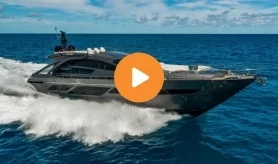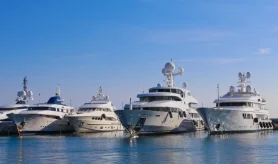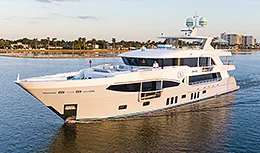- Alaskan Yachts
- Azimut Yachts
- Back Cove Yachts
- Beneteau Yachts
- Benetti Superyachts
- Bertram Yachts
- Boston Whaler
- Broward Yachts
- Buddy Davis Sportfish
- Burger Yachts
- Cabo Yachts
- Catamarans
- Carver Motoryachts
- Center Console
- Chris-Craft Yachts
- Cruisers Yachts
- DeFever Trawlers
- Dufour Sailboats
- Fairline Yachts
- Feadship Yachts
- Ferretti Yachts
- Filippetti Yachts
- Formula Yachts
- Fountaine Pajot Cats
- Grady-White
- Grand Banks Trawlers
- Hargrave Yachts
- Hatteras Yachts
- Hinckley Picnic Boats
- Horizon Yachts
- Hydra-Sports
- Intrepid Boats
- Jarrett Bay Sportfish
- Jeanneau Yachts
- Kadey-Krogen Trawlers
- Lazzara Yachts
- Lekker Boats
- Luhrs Sportfish
- Marlow Yachts
- Maritimo Yachts
- Marquis Yachts
- Mazu Yachts
- McKinna Motoryachts
- Meridian Yachts
- Midnight Express
- MJM Yachts
- Mochi Craft
- Neptunus Motoryachts
- Nordhavn Trawlers
- Nordic Tugs
- Numarine Yachts
- Ocean Alexander Yachts
- Ocean King
- Offshore Yachts
- Outer Reef
- Oyster Sailing Yachts
- Pacific Mariner Yachts
- Palmer Johnson Yachts
64 Grand Banks Aleutian Class
![]()
Source: Capt. Bill Pike , Power & Motoryacht Magazine
The Next Generation
Cruise farther, faster, and more stylishly than ever before.
In a way, Long Beach, on the salty fringe of Los Angeles, is a paradoxical place. Home to hundreds, perhaps thousands, of thoroughly modern military, commercial, and recreational watercraft, it also shelters a veritable icon of seafaring tradition, the Queen Mary. Indeed, as the majestic old Cunarder faded into my rear-view mirror, lost in the mad scramble of California’s morning rush-hour traffic, it struck me that Long Beach was probably the most appropriate venue imaginable to wring out Grand Banks’ new flagship, the 64 Aleutian Class yacht. A thoroughly modern amalgam of American design, Far Eastern boat building, and top-shelf equipage, the Aleutian yet retains an august air of teaky seafaring tradition, undoubtedly in deference to Grand Banks’ long, proud heritage.
I got my first look at the Aleutian behind the offices of Stan Miller Yachts, the Grand Banks dealership in Long Beach. She was lying alongside a face dock with her dramatically flared bow–the first such bow I’d ever seen on a Grand Banks–pointed toward the Pacific. I studied her profile: While the faux carvel planking below her shadow rail was reminiscent of earlier models, almost every other element seemed either new or faintly different. Most notable was the raised pilothouse format–a first for Grand Banks, excepting the old Alaskan series woodies–with a seaworthy Portuguese bridge and seriously elevated foredeck. But there were other first-ever features, like the radar arch, big superstructure windows, squarish ports in the hull sides, and the visor-like brow over the windshield, a signature touch from the boat’s designer, Tom Fexas Yacht Design.
“Not your ordinary Grand Banks, eh?” noted sales rep Bob Phillips as we climbed the gangway. This observation, I soon discovered, was as true of the way the boat was put together as it was of her appearance. Teak decks, for example, were laid via a nifty new technique popularized by Florida’s Teak Decking Systems–bungless planks are secured with “fitting epoxy,” rather than screws that pierce and violate the integrity of laminates. Also, the windows were a far cry from what Grand Banks has been doing for years–larger, more stylish, and instead of framed with mahogany or teak, bedded in Sikaflex glazing compound in fiberglass recesses. The latter is another popular technique these days and one that nixes leak problems and offers designers a freer hand with window shapes.
Getting underway handed me yet another surprise: the near-panoramic visibility astern while maneuvering from the lower helm station. Having sea-trialed a few motoryachts in the 50-plus size range over the past year, most with limited visibility from this area, I was gratified to discover that while Phillips kicked the stern away from the face dock, he could easily eyeball the starboard quarter by simply turning to the right and looking back through the galley (with its long see-through openings beneath two athwartship banks of suspended cupboards) and the saloon. While his view of the port quarter was obstructed, primarily because of a tall TV cabinet in the aft, port-side corner of the saloon, he said future versions will offer a shorter cabinet, with a retractable TV.
The Aleutian’s performance on the pancake-flat patch of Pacific west of Long Beach was way more rousing than I’d expected. In fact, the average top end of 23.9 mph was outrageously untrawlerly, a development attributable to both the complicated Fexas hull form, which combines planing and displacement characteristics in a single running surface, and the considerable oomph of twin 800-hp Caterpillar 3406Es. Out-of-the-hole performance was, if not exactly head-snapping, at least attention-getting (check out the acceleration curve on the following page). Turning characteristics were pleasing–despite a long, true-tracking keel, the hull form banks inboard instead of disconnecting outboard. And not only did the boat achieve an optimum planing angle of about 4 degrees with gusto, it did so without obfuscating visibility forward. Then finally, sound levels at the lower helm, even at WOT, were very low, thanks to Aquadrive shaft couplers, extra-soft engine mounts, and lots of lead-loaded vinyl insulation in the engine room, all of it behind crisp perforated-aluminum panels.
Returning the Aleutian to the face dock was a piece of boathandling poetry, thanks to the visibility already mentioned and a Morse remote on a long cord that puts both engines and a gutsy 25-hp American Bowthruster bow thruster at the walkaround disposal of the skipper. I prefer hydraulic as opposed to electric thrusters, by the way, primarily because they endure long periods of usage without overheating.
Once we got tied up, my examination of the Aleutian’s finer points started with the machinery spaces, accessed via a lovely Freeman watertight door on the forward end of the lazarette, which is in turn accessed through a lounge seat along the rear of the cockpit. Three groovy features stuck out. First, while all the electrics were top-notch, I was especially impressed with the inverter system, which consists of two big Trace units (in the lazarette, actually), a whopping bank of six Trojan 8L-16 golf-cart-type batteries, and a dedicated 11.5-kW Onan genset, one of two Onan units onboard my test boat.
Second, in addition to duplex Racors for the mains and gensets, there was a mammoth centerline-mounted Racor RVSF-1 prefilter/separator on the forward firewall, capable of filtering, polishing, and even centrifuging fuel from any or all of the five fuel tanks.
And third, most details of construction I could see were fairly unusual for Grand Banks. For instance, firewalls, watertight bulkheads, and soles were of Airlite-cored fiberglass, not plywood-cored as in other models, and there was a separately molded, preformed, solid-glass grid of six stringers (and numerous athwartship members) strengthening the hull–we’re talking an all-glass boat here. Moreover, Phillips said the 64’s topsides are cored with pricey Airex instead of balsa, and the superstructure and decks are cored with Airlite.
The Aleutian’s interior was just as noteworthy. As you can see from the photos here, the basics are traditional, with top-shelf joinery, a flawless finish, and crème de la crème ancillaries, although there are some striking departures, namely the first-ever use of carpeting, the openness of the layout already noted, and on the lowest deck, the large, central office area (with settee, desk, and day head) that separates the amidships master from the VIP forward. The design emphasis? Livaboard comfort, not population density.
My overall opinion of the 64 Aleutian Class solidified about sunset, as I drove the ol’ rental car back to the hotel, taking a route that treated me to the very same vision of the Queen Mary I’d enjoyed earlier in the day and the very same sense of relevancy. Whether considered from the vantage point of construction, layout, styling, or performance, this new Grand Banks is about as close to the New Age as trawler-types get. But like the great liner that now calls Long Beach home, she’s also, paradoxically enough, a veritable icon of seafaring tradition.
Boat Specifications: 64 Grand Banks Aleutian Class
LOA: 64’0″
Beam: 19’9″
Draft: 5’0″
Weight: 95,000 lbs.
Fuel capacity: 2,000 gal.
Water capacity: 500 gal.
Test engines: 2/800-hp Caterpillar 3406E diesel inboards
Transmissions: ZF350A
Ratio: 2.636:1
Props: 5-blade Teignbridge 34×43 Nibral
Steering: Teleflex SeaStar hydraulic w/engine-driven power-assist
Controls: Morse
Optional equipment on test boat: Jenn-Air electric BBQ grill; hydraulic stabilizers; teak-plank side decks



